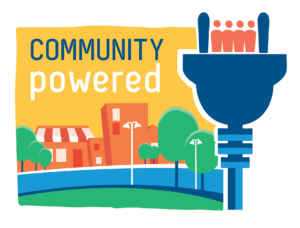Public Power is Community Power
Public power utilities (also known as municipal utilities) are community-owned, not-for-profit electric utilities that safely provide reliable, low-cost electricity to more than 49 million Americans, while protecting the environment.
Homes and businesses in 2,000 communities across the U.S. get electricity from a public power utility. While most public power utilities serve small towns with less than 4,000 customers, they also serve large cities like Austin, Nashville, Los Angeles, and Orlando. Public power utilities are in 49 states — all except Hawaii — and the territories of American Samoa, Guam, Northern Mariana Islands, Puerto Rico, and the U.S. Virgin Islands. Collectively, these utilities serve 1 in 7 U.S. homes and businesses.
The Power of Choice
Citizen-owned public power utilities have been around since the beginning of customers getting electric service more than 100 years ago. Communities continue to have the choice to get their light and power through community ownership and local control of their power supply (Learn more about the process of forming a public power utility, also called municipalization). Citizens also have a say in whether their community-owned utility can be sold to a private entity.
There are many benefits to communities and individuals in getting electricity from public power utilities. Here are some key reasons citizens might want to keep or create a public power utility in their community.
Local Ownership and Control
Like public schools and libraries, public power utilities are owned by the community and usually run as a division of local government. These utilities are governed by a local city council or an elected or appointed board. Citizens have a direct voice in utility decisions and policymaking. Business is conducted in the open and citizens know where their power comes from and how and why decisions affecting their utility bills are made.
In general, a governing body — a city council or independent utility board — has authority over a public power utility’s retail rates. In some states, and in certain circumstances, a state regulatory commission may have jurisdiction.
Public power utilities are distinct from investor-owned electric companies (which are owned by remote shareholders) and from rural electric cooperatives (which are owned by their customers).
Environmental Responsibility
Being embedded in the community – and often part of city government – means that the utility works in tandem with local leadership to support environmental policies that align with the community’s values.
Public power generates 10 percent of all electricity in the U.S. and distributes — or sells at the retail level — 15 percent of all power flowing to homes and businesses. Public power utilities care for the environment while they buy or generate electricity from diverse sources including natural gas, coal, and nuclear, as well as renewable energy sources such as solar, water, and wind. In several regions, public power utilities can buy wholesale hydropower generated from federal dams at cost and pass the savings on to customers.
Public power facilities reduced carbon dioxide emissions by 33% from 2005 to 2017, outpacing the emissions reductions seen across all electric generation in the U.S. In 2017, more than 40% of power generated by public power came from non-carbon emitting sources.
Community Investment
Public power utilities are embedded into the fabric of their communities and support a range of charitable, educational, and beautification programs. Public power employs 93,000 people in hometown jobs. On average, public power utilities pay 5.6 percent of electric operating revenues back to the community — through taxes, fees, and special services. Public power gives 33 percent more back to the community than private utilities.
Public power infrastructure projects are often funded through the issue of tax-exempt municipal bonds. Funding through municipal bonds means community members invest in their electricity infrastructure — such as new generation equipment, transmission lines, and distribution system upgrades — and receive interest as public power utilities pay back the loan.
Flexibility and Innovation
Public power utilities make business decisions that aim to improve the quality of life in the community. The public power business model offers opportunities for innovation to keep up with technological advances and changing customer energy choices. They are in tune with needs and values of their customers and serve as trusted energy advisors. Public power utilities are able to be nimble and innovate to ensure their communities desires and economic development needs thrive in the 21st Century.
Lower Cost
Homes powered by public power utilities pay 11 percent less than homes powered by private utilities. Businesses that get electricity from public power utilities also pay less than businesses that get electricity from private utilities.
Fewer Outages
Customers of public power utilities lose power less often. Customers of a public power utility are likely to be without power for 75 minutes a year, compared to customers of private utilities, who lose power for an average of 142 minutes a year — provided there are no major adverse events.
When there are major weather-related outages, public power utilities are often able to restore power faster as utility personnel live in the community. These utilities are able to call for help from other public power entities through the mutual aid system.
What You Can Do
- Find your local utility on this map and connect with them on social media.
- Attend the next public meeting of your utility and add your voice to the decision-making process.
- Write a letter to the editor of your local paper expressing your support for local ownership of your electric utility.

